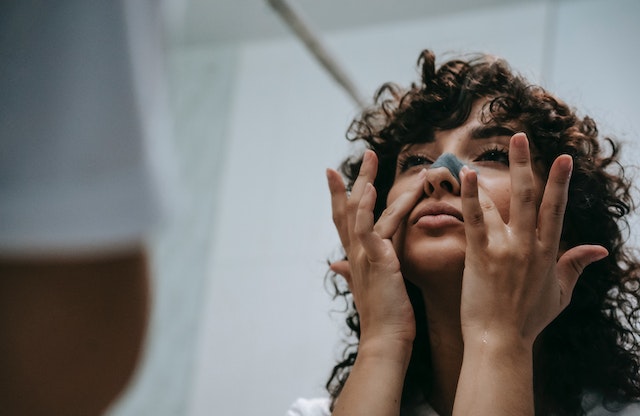Introduction: Pore strips have become a popular choice for individuals looking to tackle pesky blackheads and unclog their pores. These adhesive strips promise to remove dirt, oil, and impurities, leaving the skin looking cleaner and smoother. However, it’s essential to understand the potential effects of using pore strips to make an informed decision about incorporating
Introduction:
Pore strips have become a popular choice for individuals looking to tackle pesky blackheads and unclog their pores. These adhesive strips promise to remove dirt, oil, and impurities, leaving the skin looking cleaner and smoother. However, it’s essential to understand the potential effects of using pore strips to make an informed decision about incorporating them into your skincare routine. In this article, we will explore what you need to know about pore strips and their impact on your skin.
How Pore Strips Work:
Pore strips are typically made of a combination of polymers, adhesives, and fabrics. They are applied to damp skin, left to dry, and then carefully peeled off, supposedly pulling out the contents of the pores along with them. The adhesive on the strip adheres to the skin and supposedly attaches to the dirt, sebum, and debris in the pores, allowing for their removal when the strip is pulled off.
The Benefits of Pore Strips:
1. Instant Gratification: Pore strips offer immediate satisfaction by visually removing blackheads and surface debris. This quick and visible result can be appealing to individuals seeking instant improvement in the appearance of their pores.
2. Convenient Application: Pore strips are readily available, easy to use, and can be incorporated into your skincare routine without much effort or time investment.
The Potential Risks and Considerations:
1. Skin Irritation: Pore strips can cause skin irritation, especially for those with sensitive or easily irritated skin. The adhesive used in pore strips can strip away the skin’s natural oils and disrupt its protective barrier, leading to redness, dryness, and peeling.
2. Limited Effectiveness: Pore strips primarily target superficial blackheads, and their effectiveness in removing deeper congestion or other forms of acne is limited. They may not fully address the underlying causes of blackheads and can provide only temporary relief.
3. Potential Skin Damage: The act of removing a pore strip can be harsh on the skin. Pulling off the strip forcefully or in the wrong direction may cause bruising, broken capillaries, or damage to the skin’s surface.
4. Continued Use: Regular and excessive use of pore strips can lead to a cycle of dependence, where the pores become clogged again shortly after use. This may prompt repeated use of pore strips, potentially exacerbating skin irritation and disrupting the skin’s natural balance.
5. Alternative Treatment Options: There are alternative treatment options available that can address blackheads and clogged pores more effectively and without the potential risks associated with pore strips. These include chemical exfoliants, retinoids, professional extractions, and a consistent skincare routine.
Tips for Safe Use of Pore Strips:
If you choose to use pore strips despite their potential risks, consider the following tips to minimize the negative impact on your skin:
1. Follow Instructions: Always read and follow the instructions provided with the pore strips carefully. Adhere to the recommended usage frequency and duration.
2. Prepare Your Skin: Ensure your skin is clean and free of any makeup or skincare products before applying the pore strip. This will allow for better adhesion and may reduce the potential for irritation.
3. Do Not Overuse: Limit your use of pore strips to avoid excessive irritation and damage. Using them once a week or every other week may be a reasonable frequency for most individuals.
4. Be Gentle: When removing the pore strip, do it gently and in the direction specified in the instructions. Avoid pulling or tugging too forcefully, as this can lead to skin damage.
5. Follow Up with Skincare: After using a pore strip, follow up with a gentle cleanser and a soothing, hydrating moisturizer to help restore the skin
‘s balance and prevent dryness.
Conclusion:
Pore strips can provide immediate satisfaction by removing visible blackheads and surface debris. However, it’s crucial to consider the potential risks and limitations associated with their use. Skin irritation, limited effectiveness, and the potential for skin damage are important factors to consider. Exploring alternative treatment options such as chemical exfoliants, retinoids, and professional extractions may offer safer and more effective ways to address blackheads and clogged pores. Ultimately, it’s important to make an informed decision and prioritize the long-term health and balance of your skin. Consulting with a dermatologist can provide personalized advice and recommendations tailored to your specific skin needs.

















Leave a Comment
Your email address will not be published. Required fields are marked with *